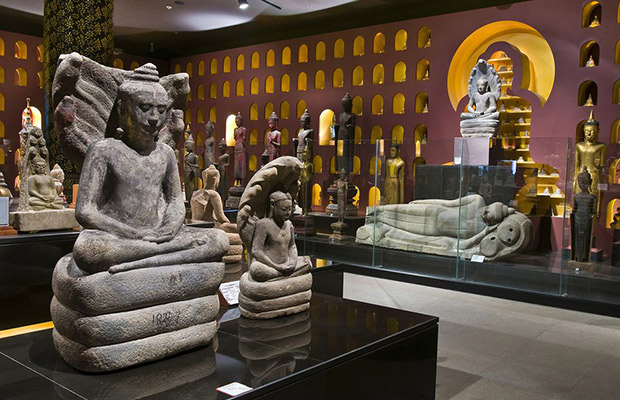In the four-day tour package with Angkor Pioneer Tour, we will take you to visit the famous tourist attractions of Cambodia as listed below. If you wish to visit other tourist sites that are not included in the tour package we have arranged, you can also create your own custom tour package. Simply click on the phrase ‘Customize your trip,’ then write the names of the tourist sites you would like to visit and send them to us.
Siem Reap
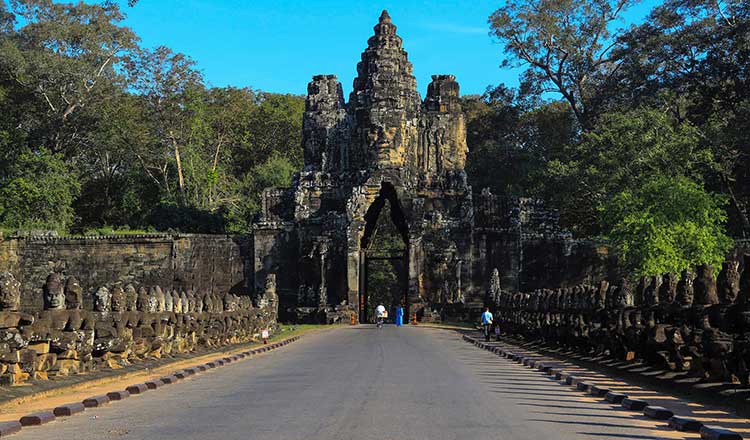
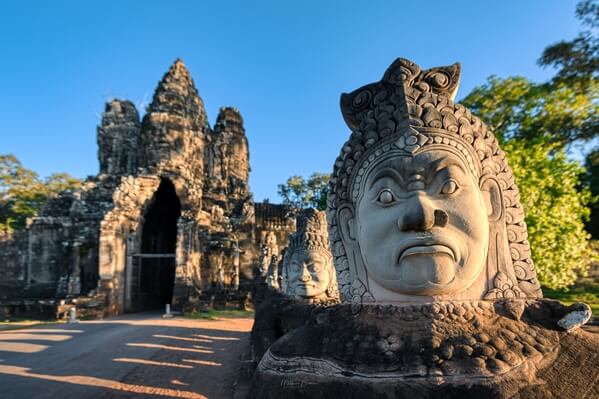
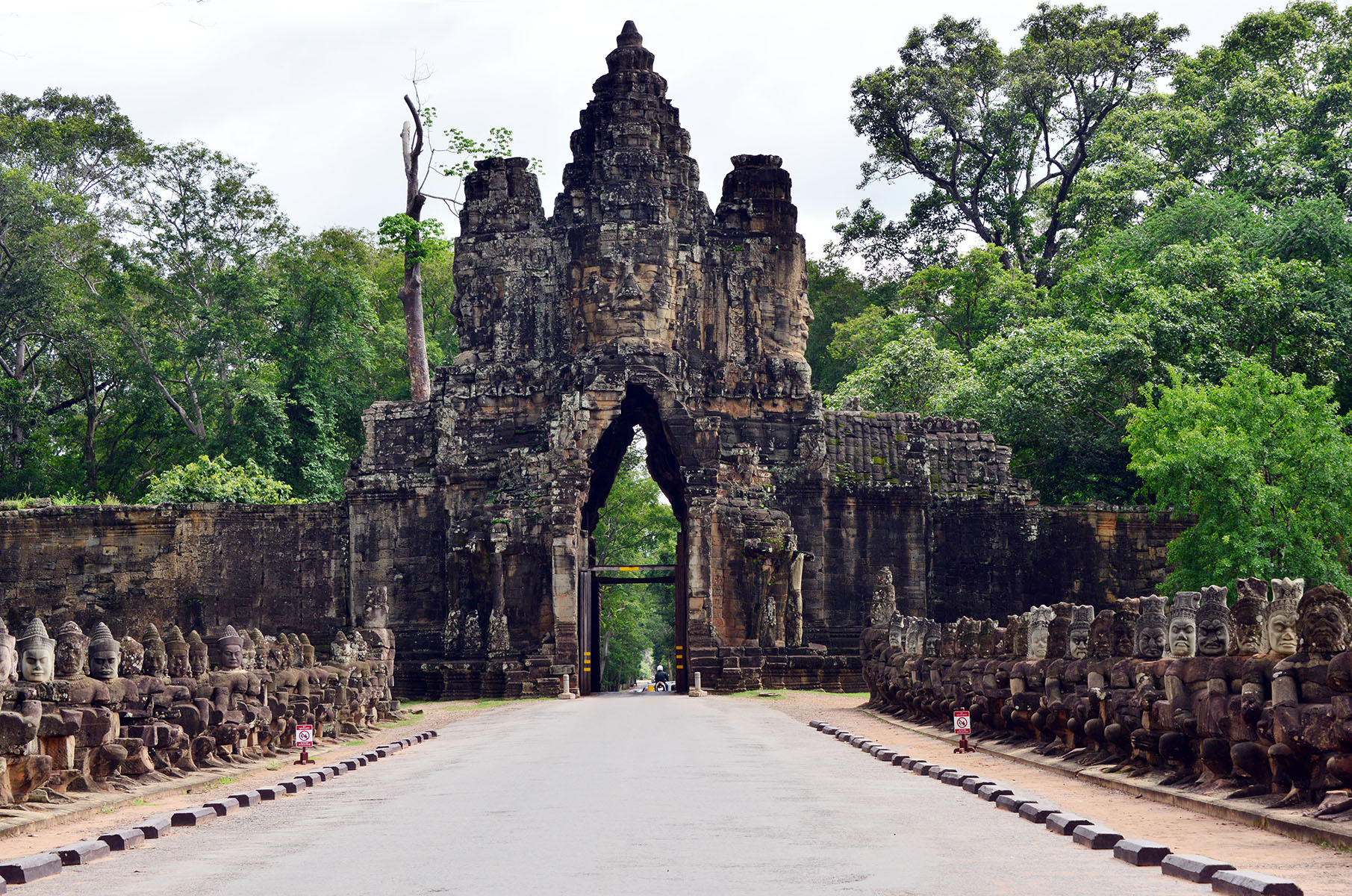
The South Gate of Angkor Thom, located in Siem Reap, Cambodia, is one of the most iconic and well-preserved entrances to the ancient city of Angkor Thom. This majestic gate is part of the larger Angkor Thom complex, which was built in the late 12th century by the Khmer King Jayavarman VII. Here’s a detailed description: The South Gate is a monumental structure that stands about 20 meters (66 feet) high, featuring a series of stone towers and a grand causeway. The gate is flanked by two enormous statues, each depicting a row of gods and demons in an eternal tug-of-war. The gods are on the left side, and the demons are on the right. These figures represent the Hindu mythological scene of the churning of the ocean of milk, symbolizing the cosmic struggle between good and evil. The gate represents the gateway to the ancient city, where the king and his subjects would enter the heart of the empire. The faces on the towers symbolize the king’s divine protection and the king’s role as a protector of both the people and the Buddhist faith.



The Bayon Temple is a striking and enigmatic temple complex located at the heart of the ancient city of Angkor Thom in Cambodia. Built in the late 12th or early 13th century by King Jayavarman VII, the Bayon Temple is renowned for its impressive architecture, intricate bas-reliefs, and iconic stone faces. King Jayavarman VII, one of the most powerful and ambitious rulers of the Khmer Empire, commissioned the construction of the Bayon Temple as the state temple of his capital city, Angkor Thom. The temple was dedicated to Mahayana Buddhism, reflecting the king’s religious beliefs and his desire to create a monumental symbol of his reign.The bas-reliefs of the Bayon Temple depict a wide range of subjects, including historical events, mythological scenes, and everyday life in ancient Khmer society. Over the centuries, the Bayon Temple fell into disrepair and was partially reclaimed by the jungle until it was rediscovered and restored in the 20th century. Today, it stands as a UNESCO World Heritage Site and a testament to the artistic and architectural achievements of the Khmer civilization.



The Baphuon temple is a magnificent ancient temple located within the Angkor Archaeological Park in Cambodia. Built in the mid-11th century by King Udayadityavarman II, the Baphuon is a grand and imposing temple mountain that served as a state temple dedicated to the Hindu god Shiva. The temple complex covers an area of approximately 120 hectares and features a central sanctuary tower that rises to a height of over 30 meters, symbolizing Mount Meru, the mythical abode of the gods in Hindu cosmology. King Udayadityavarman II, a powerful ruler known for his ambitious building projects and devotion to Hinduism, commissioned the construction of the Baphuon as a grandiose state temple to showcase his wealth, power, and piety. The temple’s name, which means “shrine of the sacred peak,” reflects its symbolic association with the cosmic mountain at the center of the universe. One of the most remarkable features of the Baphuon is its historical and cultural significance as a center of religious worship, royal ceremonies, and political power. The temple complex served as a focal point for state rituals, royal processions, and public gatherings, reflecting the close relationship between religion, monarchy, and society in ancient Khmer civilization.



Phimeanakas Temple, located within the Angkor Archaeological Park in Siem Reap, Cambodia, is a fascinating ancient monument that offers visitors a glimpse into the rich history and architectural brilliance of the Khmer Empire. Phimeanakas, meaning “Celestial Palace,” is an intricately designed temple steeped in history. Constructed during the reign of King Rajendravarman II in the late 10th century and later expanded by King Jayavarman VII in the 12th century, the temple served as a royal palace and the focal point of Khmer court life. The temple’s architectural style reflects the transition between the early Khmer temple design and the more elaborate structures that followed. Built in the pyramid shape typical of Khmer temples, Phimeanakas features a series of ascending terraces leading to a central sanctuary tower. The intricate carvings adorning the sandstone walls depict Hindu mythological scenes and divine beings, showcasing the exquisite craftsmanship of the Khmer artisans. According to local tradition, the temple was once inhabited by the Naga, a mythical serpent-like creature, who transformed into a beautiful woman every night. The Khmer king was required to visit the temple each night to fulfill his duty of spending the night with the Naga queen, ensuring the prosperity and fertility of the kingdom. This myth adds a layer of intrigue to the temple’s history, inviting visitors to imagine the mystical world of ancient Cambodia.
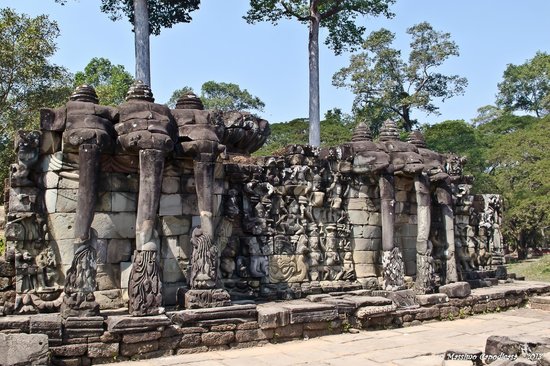


The Terrace of the Elephants is one of the most iconic and remarkable structures in the Angkor Archaeological Park, located in Siem Reap, Cambodia. It is a royal platform that was part of the larger complex of Angkor Thom, the last capital of the Khmer Empire. The Terrace of the Elephants was built in the late 12th century during the reign of King Jayavarman VII (1181–1218 AD). Jayavarman VII was one of the most powerful and influential kings of the Khmer Empire and is also credited with expanding the empire’s territory and building many of its most famous monuments. The terrace was likely used for royal ceremonies, public appearances, and rituals, as well as a platform for the king and his court to observe parades, military victories, and other state events. It may also have served a ceremonial function, as evidenced by its symbolic depictions of elephants, which were revered in Khmer culture.



Angkor Wat is one of the most iconic and impressive temple complexes in the world. Built in the early 12th century by King Suryavarman II, Angkor Wat is a masterpiece of Khmer architecture and a symbol of the grandeur and power of the Khmer Empire. King Suryavarman II, a powerful ruler who reigned from 1113 to 1150, commissioned the construction of Angkor Wat as a state temple and mausoleum dedicated to the Hindu god Vishnu. The temple was designed to serve as a spiritual and political center, reflecting the king’s devotion to Vishnu and his desire to establish a lasting legacy. Angkor Wat is renowned for its monumental scale, intricate carvings, and sophisticated architectural design. The temple complex covers an area of over 162 hectares and consists of multiple galleries, courtyards, towers, and basins arranged in a symmetrical layout that reflects the Hindu cosmology. After the decline of the Khmer Empire in the 15th century, Angkor Wat was gradually abandoned and fell into disrepair until it was rediscovered by French explorers in the 19th century. Since then, the temple has been extensively restored and preserved, becoming a UNESCO World Heritage Site and a symbol of Cambodia’s cultural heritage.
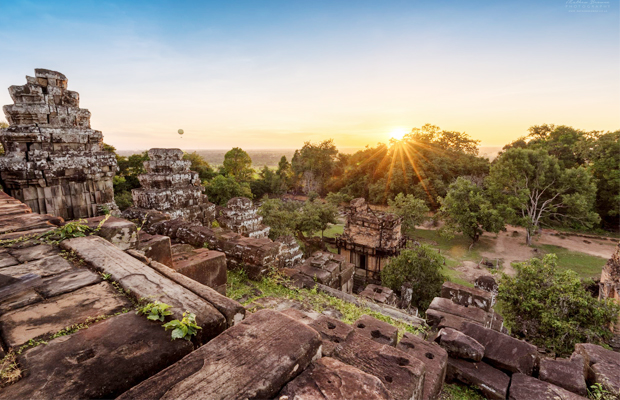


As the sun begins to set, the sky transforms into a vibrant canvas, with hues of orange, pink, and purple painting the horizon. The light softens, casting a warm golden glow over the ancient stone structures of Phnom Bakheng. The temple, which dates back to the 9th century, is bathed in a delicate light, its carvings and towers highlighted by the fading sun. The view is especially spectacular when the sun sets behind the distant silhouette of Angkor Wat, which adds a sense of awe and history to the moment. The surrounding jungle also begins to cool down, creating a peaceful, tranquil atmosphere. If you’re lucky, you might see a few clouds illuminated in stunning colors as the sun dips lower. As the sun sets, the temple area becomes a popular spot for tourists and locals alike, with many visitors snapping photos, while others simply sit and enjoy the serene beauty of the scene. The evening air becomes cooler, offering a refreshing break after a day of exploring the Angkor complex.



Watching the sunrise at Angkor Wat temple in Cambodia is an experience that transcends mere sightseeing—it’s a journey into the heart of history, spirituality, and natural beauty. For photography enthusiasts, the sunrise at Angkor Wat presents an unparalleled opportunity to capture stunning images of one of the world’s most iconic landmarks. The interplay of light and shadow, the silhouettes of temple spires against the dawn sky, and the reflection of the temple in the nearby ponds create an endless array of compositions waiting to be captured. Whether you’re a professional photographer or simply someone who appreciates the beauty of nature, the sunrise at Angkor Wat offers a visual feast that will leave you spellbound. Ultimately, the sunrise at Angkor Wat is not just about what you see, but how it makes you feel. It’s about the sense of wonder that fills your soul as you witness the unfolding drama of dawn in this mystical setting.
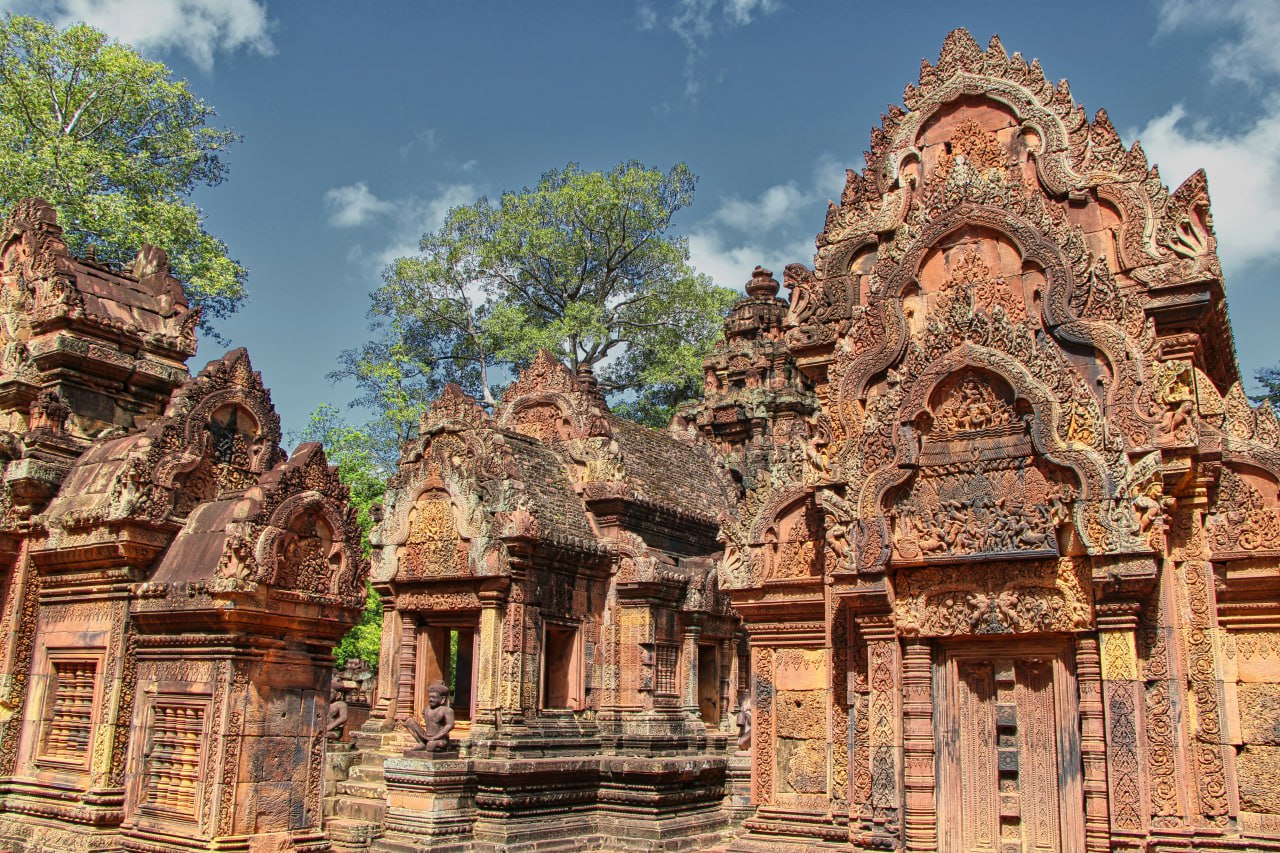


The Banteay Srei temple is a 10th-century Hindu temple dedicated to the god Shiva. It is renowned for its intricate and well-preserved pink sandstone carvings, which are considered some of the finest examples of classical Khmer art. The temple was built in 967 AD by a courtier named Yajnavaraha, who served as an advisor to King Rajendravarman II. Banteay Srei means “Citadel of Women” or “Citadel of Beauty” in Khmer, and it is believed that the temple’s delicate carvings were done by women due to their exquisite detail and craftsmanship. Banteay Srei is relatively small compared to other temples in the Angkor region, but its intricate carvings and well-preserved condition make it a popular tourist destination. The temple was rediscovered in 1914 and has since undergone extensive restoration to protect its delicate carvings from weathering and erosion. Today, Banteay Srei is considered one of the jewels of Khmer art and architecture, showcasing the skill and artistry of the ancient Khmer civilization. It is a UNESCO World Heritage site and a must-visit for anyone interested in Cambodian history and culture.

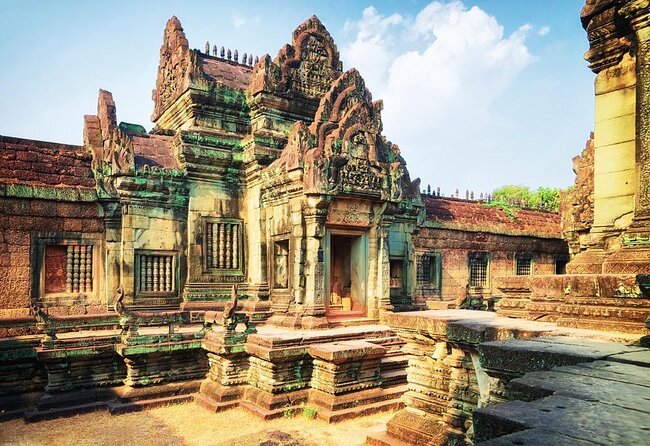

Banteay Samre is situated about 400 meters east of the East Baray and about 500 meters south of the east end of the Eastern Route of the Angkor Archaeological Park. Built in the mid-12th century during the reign of King Suryavarman II, the same monarch responsible for the grandeur of Angkor Wat, Banteay Samre is believed to have been dedicated to the Hindu god Vishnu. It represents one of the finest examples of classical Khmer architecture and artistry. The temple complex is surrounded by a moat, typical of Khmer architecture, and features a series of concentric galleries with towers at the corners. Its design resembles that of Angkor Wat but on a smaller scale. The temple is constructed with sandstone, adorned with intricate carvings, bas-reliefs, and decorative motifs, showcasing exquisite craftsmanship. Visitors can admire intricate carvings of gods, celestial dancers, warriors, animals, and floral motifs, providing insight into the culture and beliefs of the time. Banteay Samre is a hidden gem within the Angkor Archaeological Park, offering visitors a glimpse into Cambodia’s rich cultural heritage and architectural mastery. It’s a must-visit destination for anyone exploring the ancient wonders of Angkor.
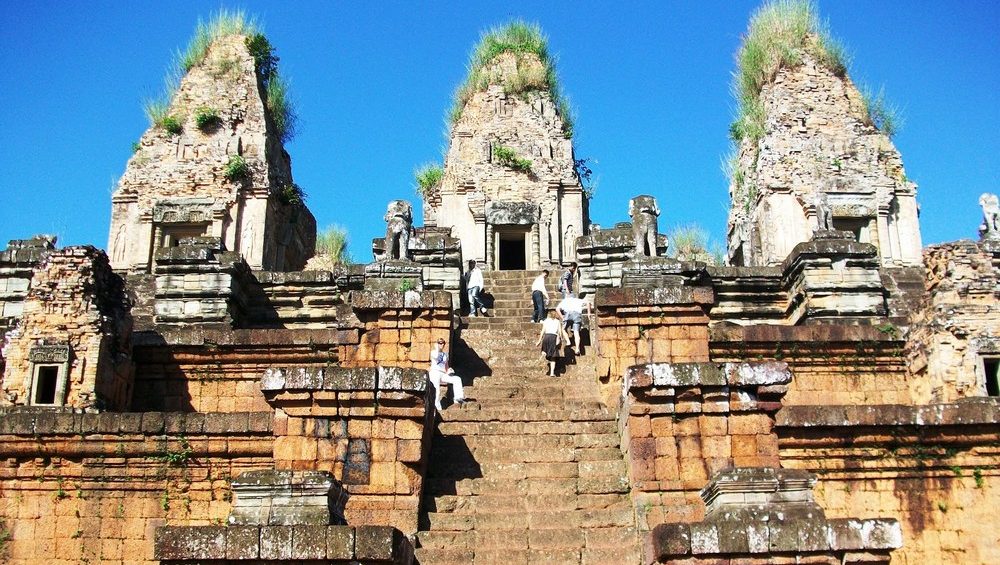


Constructed in the late 10th century during the reign of King Rajendravarman II, and completed by his successor, King Jayavarman V, Pre Rup is one of the oldest temples in the Angkor complex. It was dedicated to the Hindu god Shiva and served as a state temple for performing important ceremonies, including royal cremations. Pre Rup is renowned for its exquisite architectural design, characterized by towering brick and laterite structures with intricate carvings and decorative elements. The temple features a central sanctuary tower surrounded by three tiers of diminishing size, reminiscent of a stepped pyramid. Pre Rup is a popular spot for sunrise and sunset viewing due to its elevated position and unobstructed views. Many visitors flock to the temple in the early morning or late afternoon to witness the breathtaking spectacle of the sun casting golden hues over the temple’s spires and surrounding landscape. Pre Rup Temple offers visitors a captivating glimpse into Cambodia’s ancient past, with its impressive architecture, serene atmosphere, and stunning vistas making it a must-visit destination within the Angkor Archaeological Park.
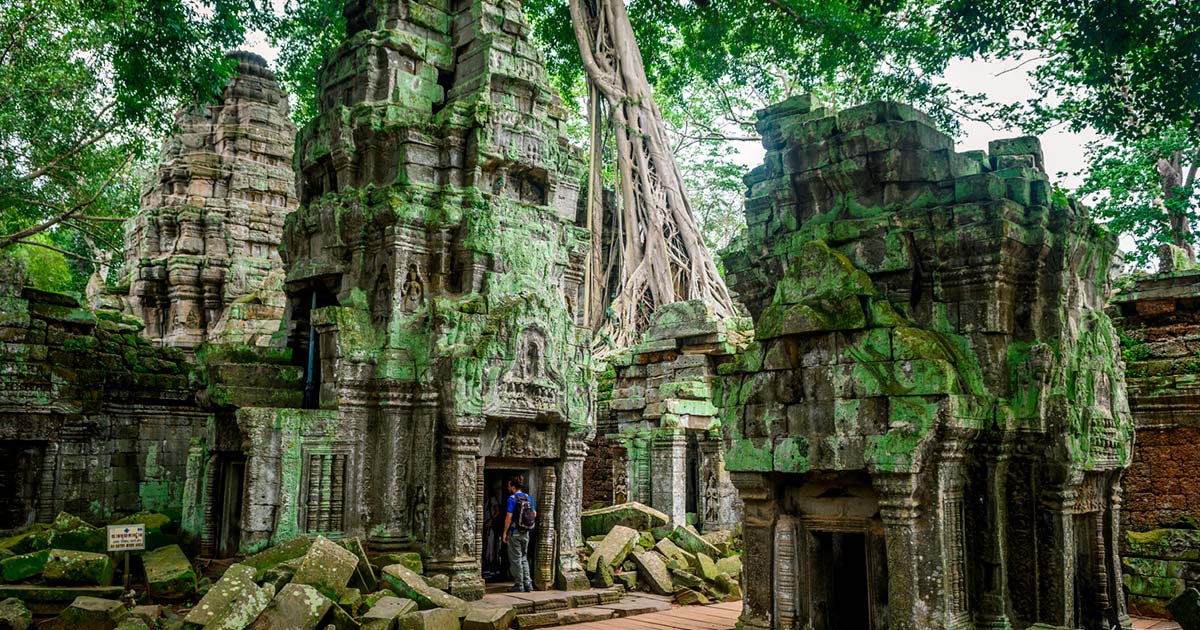


Ta Prohm is a captivating temple complex located in the Angkor Archaeological Park in Cambodia. Built in the late 12th and early 13th centuries by King Jayavarman VII, Ta Prohm is a unique and atmospheric temple that has been left in a partially ruined state, with the jungle reclaiming much of its structure. King Jayavarman VII, a powerful ruler known for his ambitious building projects and patronage of Buddhism, commissioned the construction of Ta Prohm as a Mahayana Buddhist monastery and university. The temple was dedicated to the king’s mother and symbolized the union of religion and royalty in Khmer society. Ta Prohm is renowned for its distinctive architectural style, which features a combination of traditional Khmer design elements and innovative features such as flat roofs, square galleries, and cruciform sanctuaries. The temple complex covers an area of over 40 hectares and consists of multiple enclosures, courtyards, towers, and galleries adorned with intricate carvings and bas-reliefs. One of the most striking features of Ta Prohm is the way in which the temple has been enveloped by the roots of giant silk-cotton trees, creating a dramatic and otherworldly atmosphere.


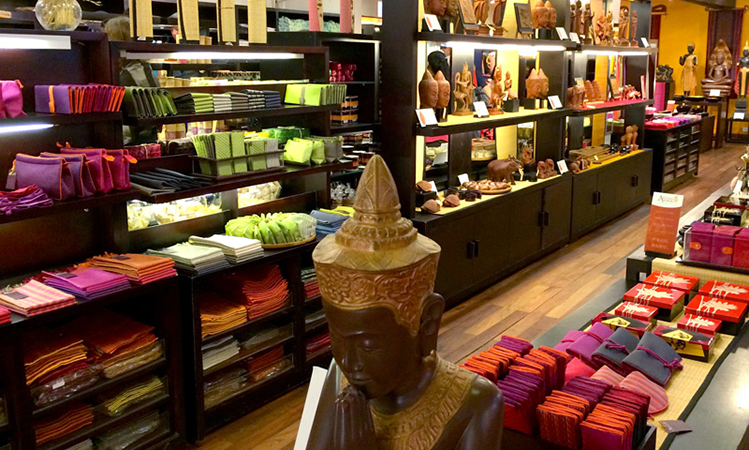

Artisans Angkor was created as a way to preserve Cambodia’s cultural heritage, promote sustainable development, and empower local communities through vocational training and economic empowerment. Artisans Angkor offers comprehensive training programs in various traditional crafts to young Cambodians from disadvantaged backgrounds, equipping them with the skills, knowledge, and resources needed to become skilled artisans and entrepreneurs. The organization’s workshops are led by experienced master craftsmen who pass on their expertise and techniques to the next generation of artisans. By upholding high standards of craftsmanship, creativity, and innovation, Artisans Angkor ensures the production of exquisite handmade products that showcase the beauty, authenticity, and quality of Khmer arts and crafts. Artisans Angkor produces a wide range of handmade products, including sculptures, jewelry, textiles, home decor items, accessories, and gifts that are inspired by Cambodia’s cultural heritage and natural beauty.
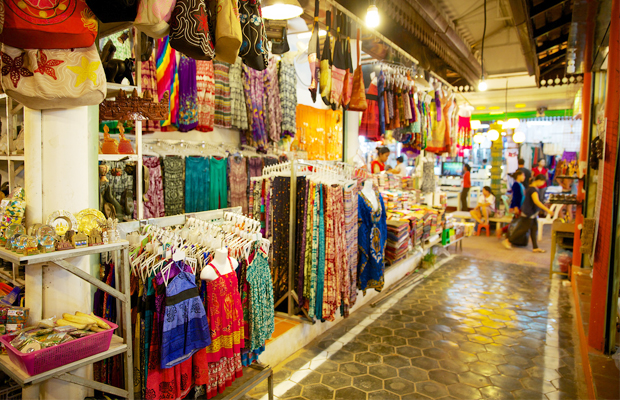
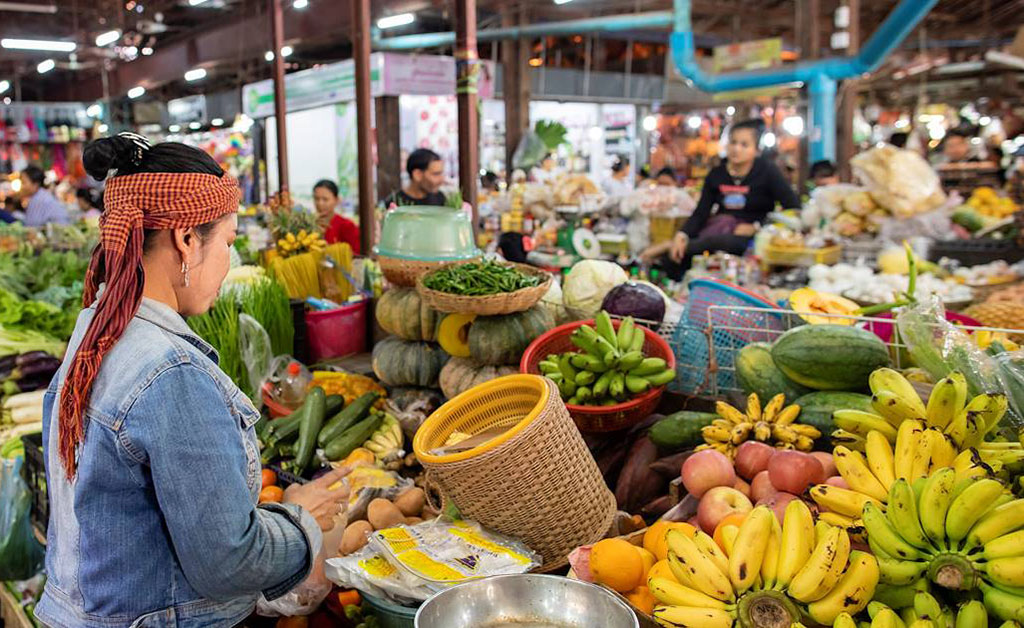
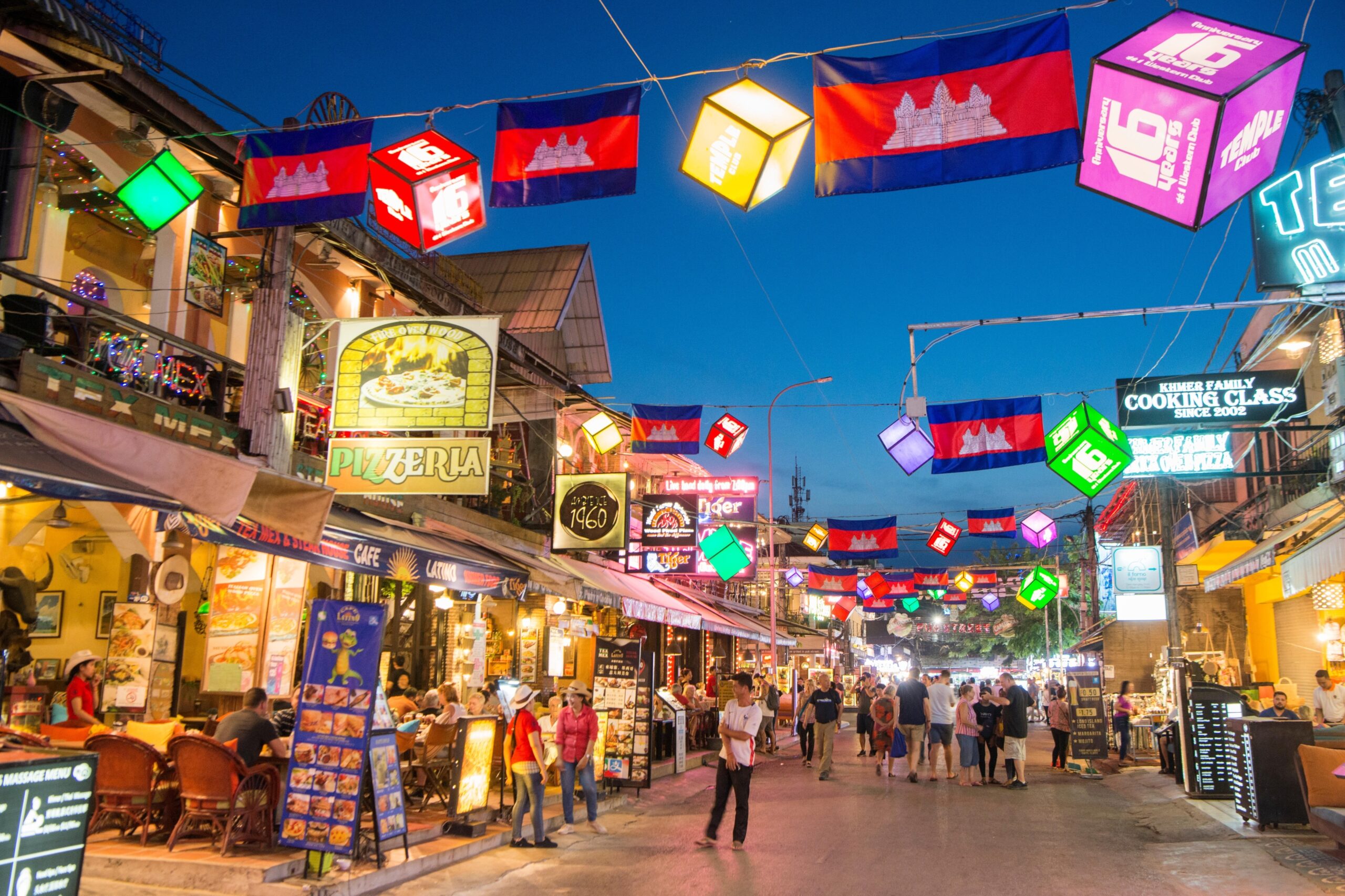
The Old Market (also known as Phsar Chas) in Siem Reap, Cambodia, is a vibrant and bustling marketplace that offers a rich cultural experience. It is located in the heart of Siem Reap, close to the town’s central area, making it a popular spot for both locals and tourists. The market has a long history and has been a central hub for commerce in Siem Reap for many years. The old colonial-style building gives it a unique atmosphere, blending traditional Khmer culture with influences from the French colonial era. As you walk through the market, you can sense a lively, energetic vibe, where locals come to buy daily goods and tourists search for unique souvenirs.
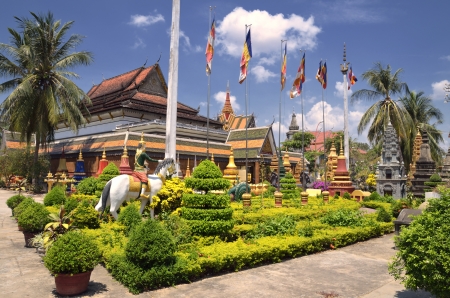
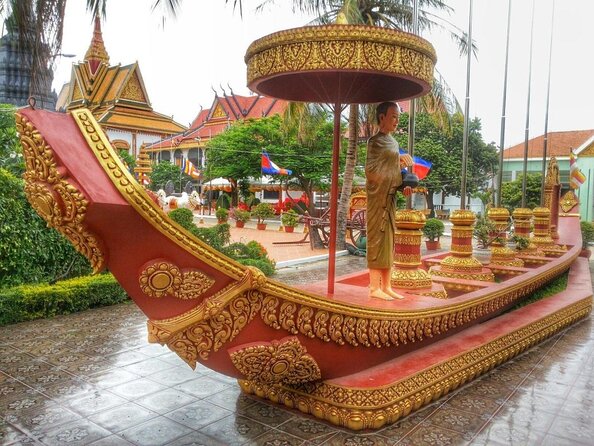
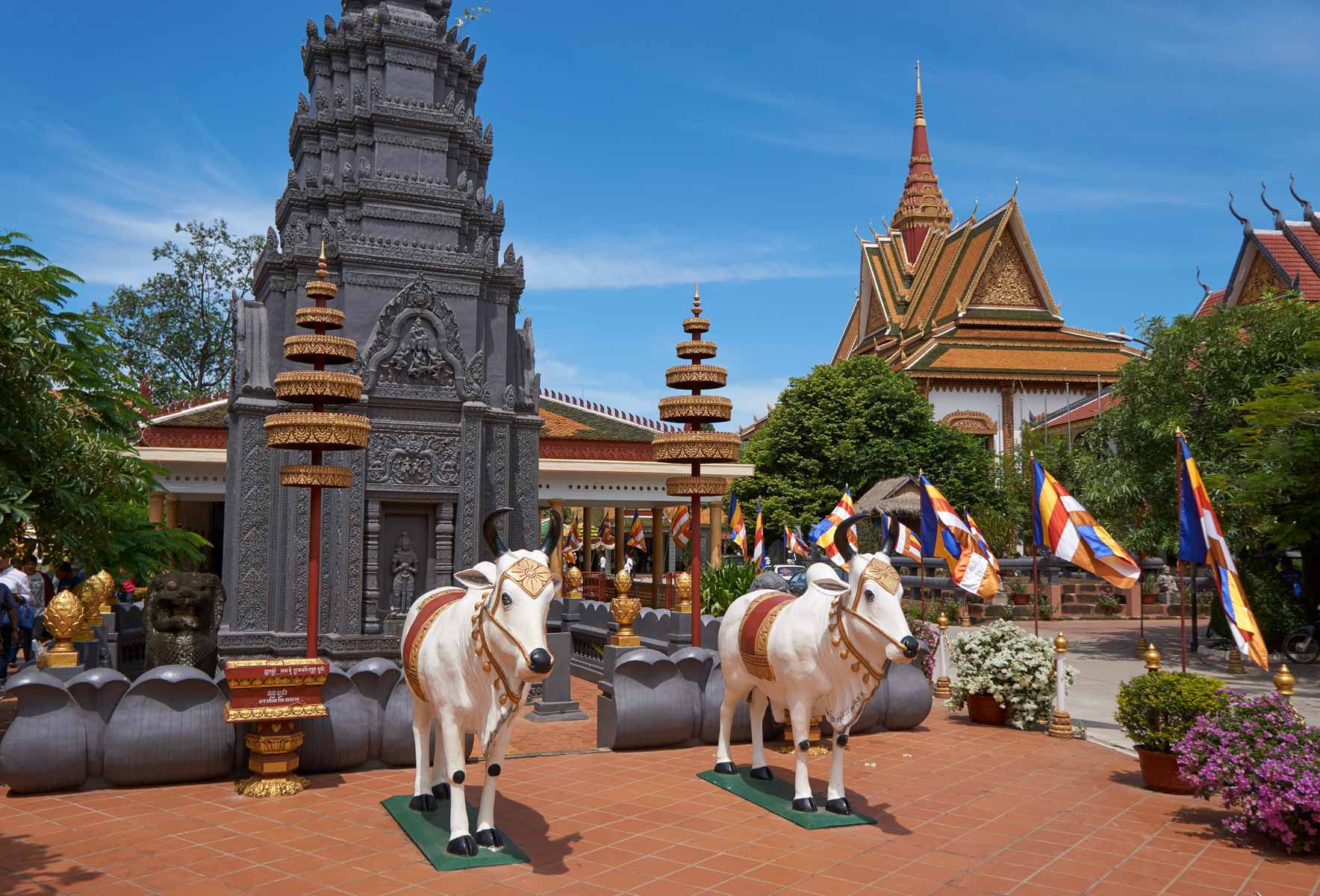
Preah Prohm Rath Pagoda is a significant Buddhist temple located in the heart of Siem Reap town, Cambodia. It is known for its peaceful atmosphere and its role as an important center of Buddhist worship and local community activities. Preah Prohm Rath Pagoda is one of the key Buddhist landmarks in Siem Reap. Its history is closely linked to the cultural and religious practices of the Cambodian people. Preah Prohm Rath Pagoda features a traditional Khmer architectural style, with intricately designed roofs, colorful murals, and religious statues that depict Buddhist imagery and symbols. Despite being in a busy part of Siem Reap, Preah Prohm Rath Pagoda offers a peaceful retreat. The area surrounding the pagoda is lush and green, with trees and gardens, which help create a calm and tranquil environment. It is an ideal spot for visitors looking to experience some quiet reflection or take a moment away from the busy markets and tourist attractions nearby.
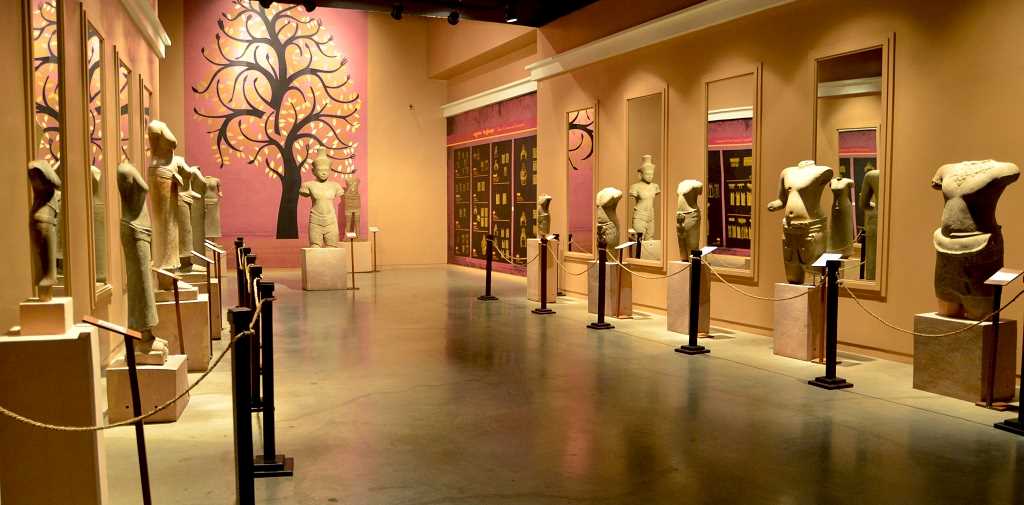
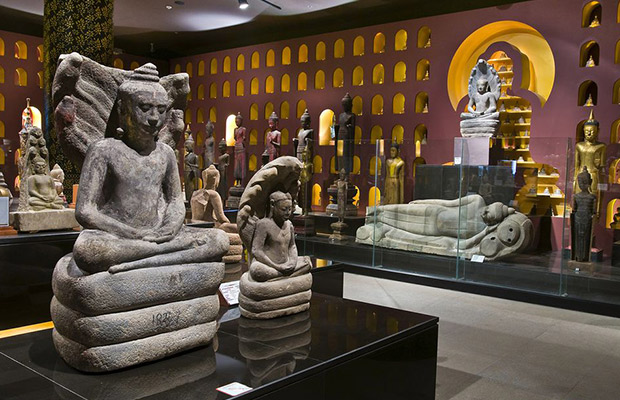
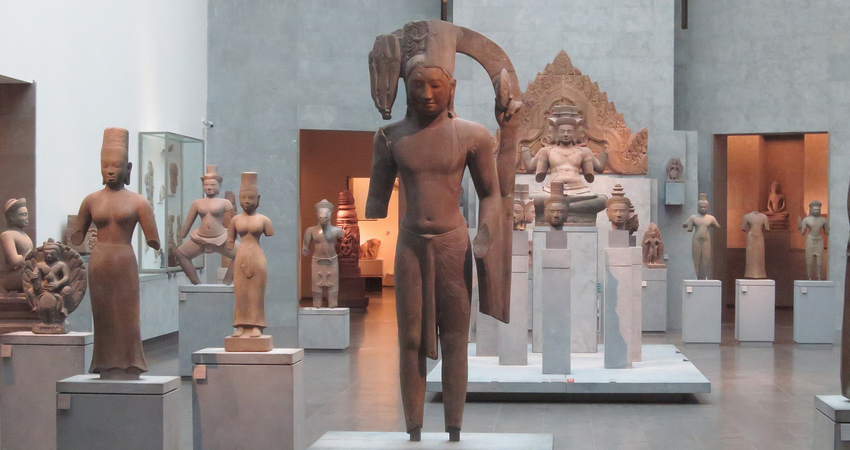

The Angkor National Museum is a cultural institution located in Siem Reap, Cambodia, near the famous Angkor Archaeological Park. The museum is dedicated to educating visitors about the history, art, and architecture of the ancient Khmer Empire, which reached its peak in the 12th century under King Suryavarman II. The idea for the museum was first proposed in the early 2000s as a way to protect and promote Cambodia’s cultural heritage. The project was supported by the Cambodian government and several international organizations, including UNESCO. Construction of the museum began in 2005 and was completed in 2007, with the official opening taking place later that year.
The Angkor National Museum is divided into several galleries, each focusing on different aspects of Khmer history and culture. The museum’s collection includes a wide range of artifacts, including sculptures, ceramics, and religious objects dating back to the Angkorian period. The exhibits are accompanied by informative displays and multimedia presentations that help visitors understand the significance of the artifacts and their place in Khmer history.

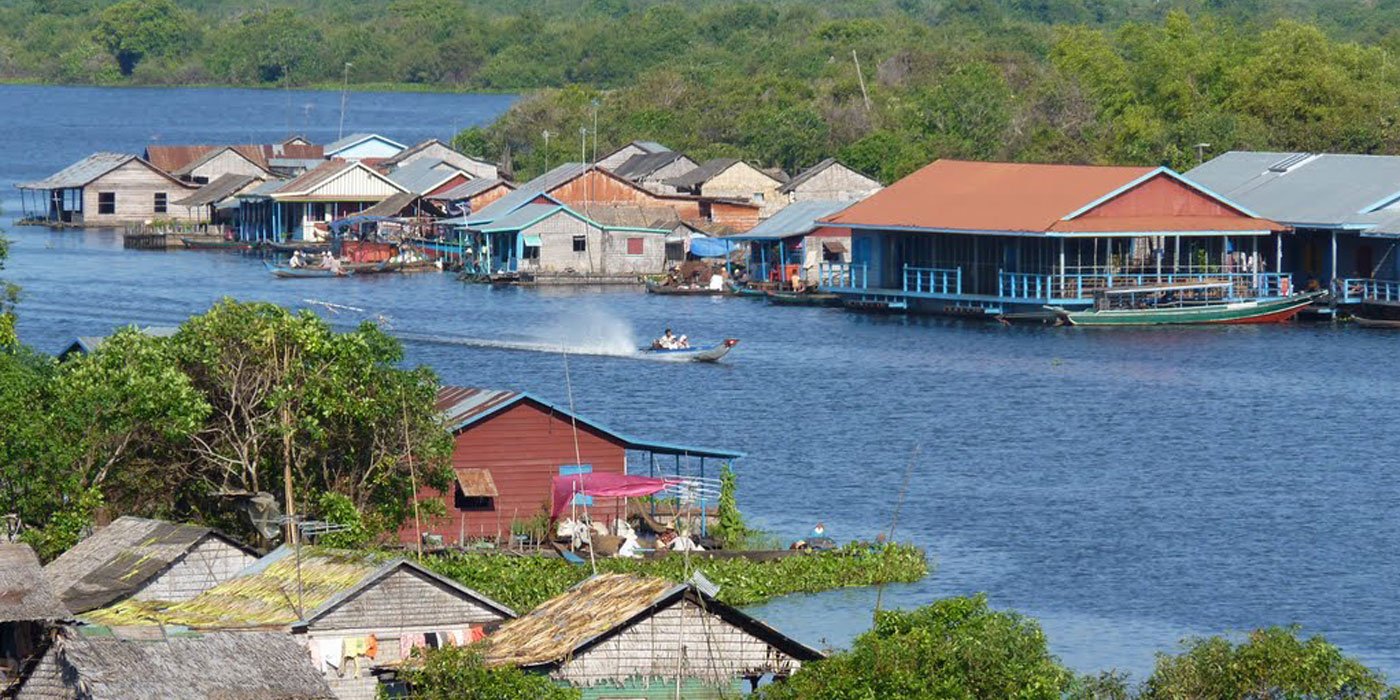

Kampong Phlouk Floating Village is a unique and enchanting community located in the heart of the Tonle Sap Lake, near Siem Reap, Cambodia. This picturesque village is renowned for its stilted houses, floating markets, and vibrant way of life that revolves around the ebb and flow of the water. Visitors to Kampong Phlouk have the opportunity to immerse themselves in the rich culture and traditions of the local residents, who have adapted to living on the water for generations. The residents of Kampong Phlouk Floating Village lead a fascinating lifestyle that is deeply connected to the water. The village is home to a diverse community of fishermen, farmers, and artisans who rely on the lake for their livelihoods. Visitors can witness traditional fishing techniques, explore floating gardens, and interact with locals as they go about their daily routines. The village is also known for its colorful floating markets, where vendors sell fresh produce, handicrafts, and souvenirs from their boats. Kampong Phlouk Floating Village is also a hub for ecotourism and conservation efforts in Cambodia. The village is surrounded by a rich ecosystem of mangrove forests, wetlands, and bird sanctuaries that support a diverse array of wildlife, including rare bird species and endangered aquatic animals.

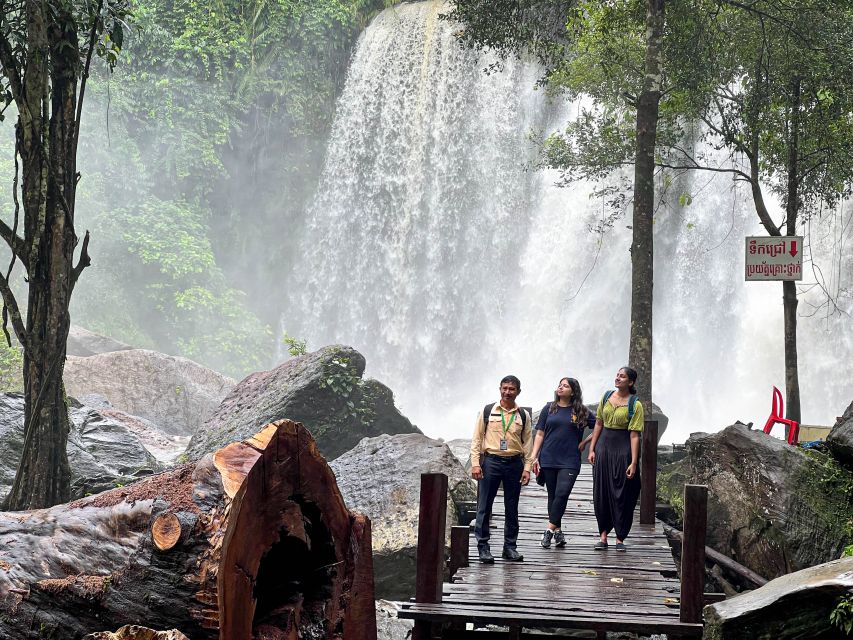
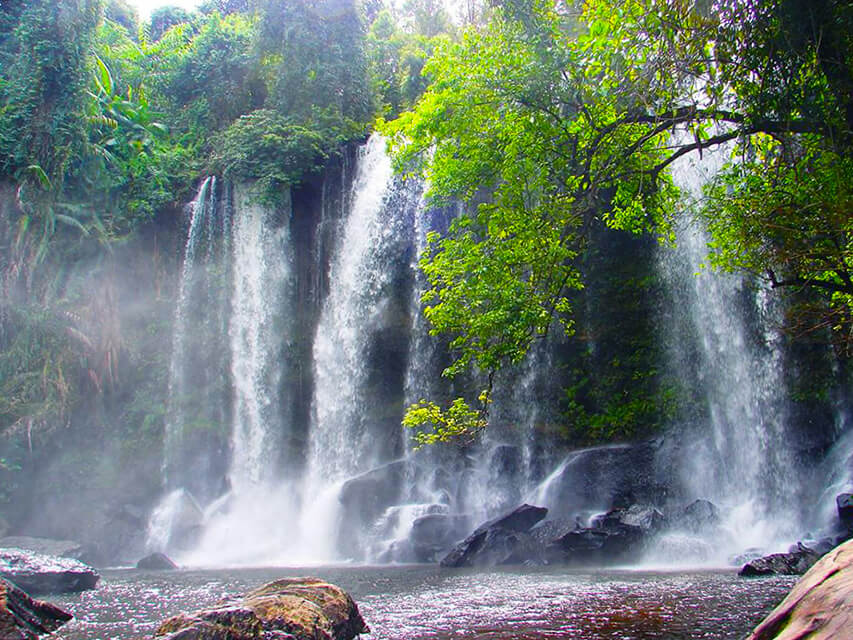
Kulen Mountain (also known as Phnom Kulen) is a significant and sacred mountain located in the northern part of Siem Reap province, Cambodia. It holds great historical, cultural, and religious importance, not only for its natural beauty but also for its role in the early history of the Khmer Empire. It is considered one of the most important pilgrimage sites in Cambodia and is part of the Kulen Mountain National Park. Phnom Kulen is often referred to as the “birthplace of the Khmer Empire.” It is believed that in the 9th century, King Jayavarman II declared himself the first king of Cambodia here, marking the beginning of the Angkorian period. The mountain is home to several ancient structures and carvings that highlight its religious importance, particularly in Hinduism and later in Buddhism. One of the most famous natural features of Kulen Mountain is the Kulen Waterfall. This stunning, multi-tiered waterfall is surrounded by lush greenery, creating a serene and picturesque atmosphere. The waterfall has become a popular spot for tourists and locals alike to relax, swim, and enjoy the natural beauty of the area. The clear, cool water provides a refreshing break from the heat of the surrounding region. Kulen Mountain is a haven for nature lovers. The surrounding area features dense forests, diverse wildlife, and a rich ecosystem. It is a popular destination for hiking and trekking, with several trails leading to hidden temples, caves, and stunning viewpoints..
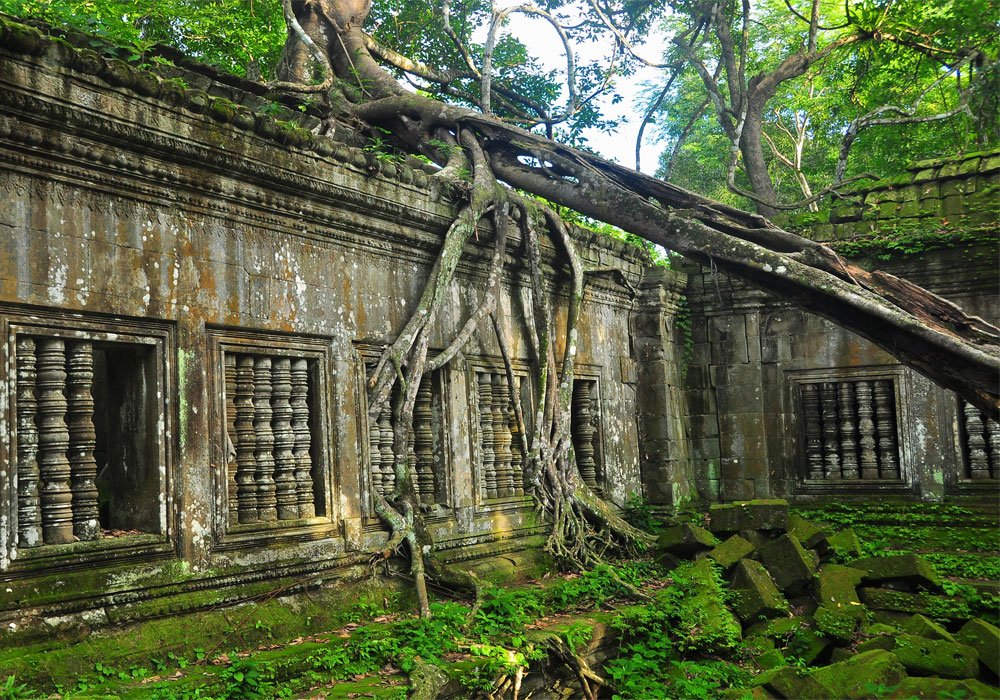
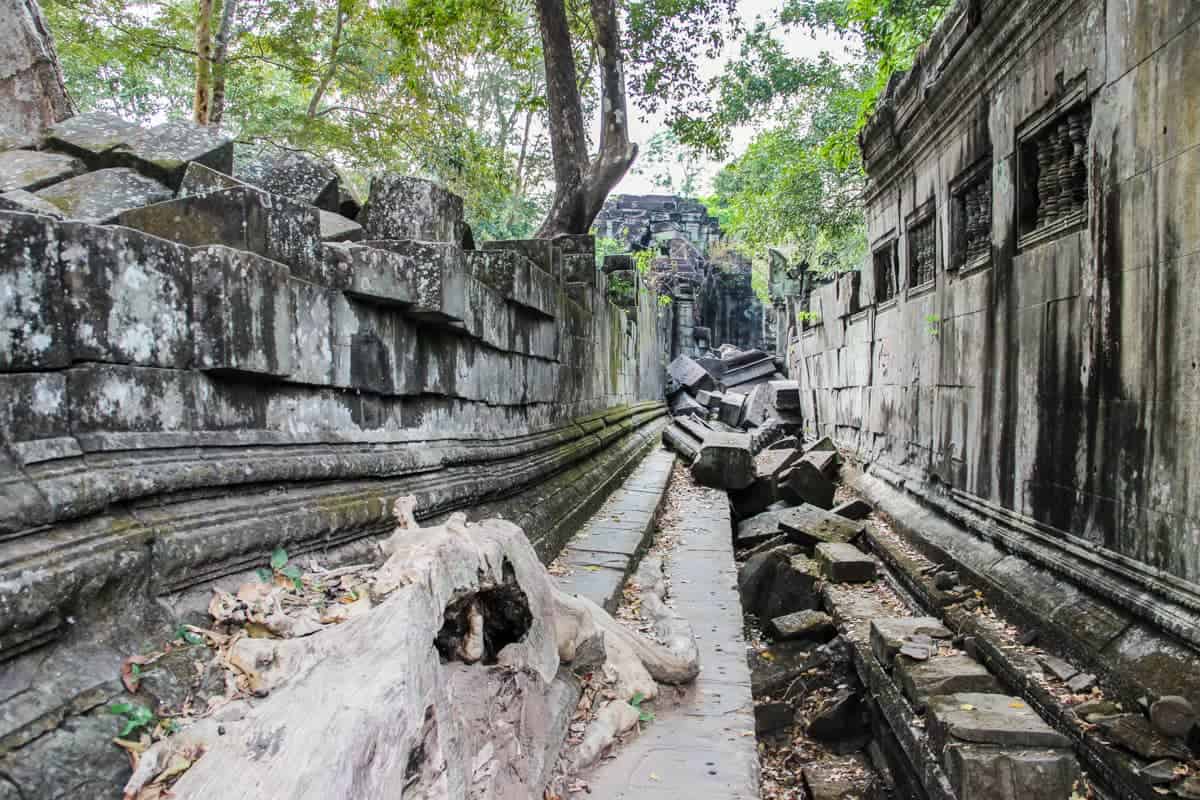
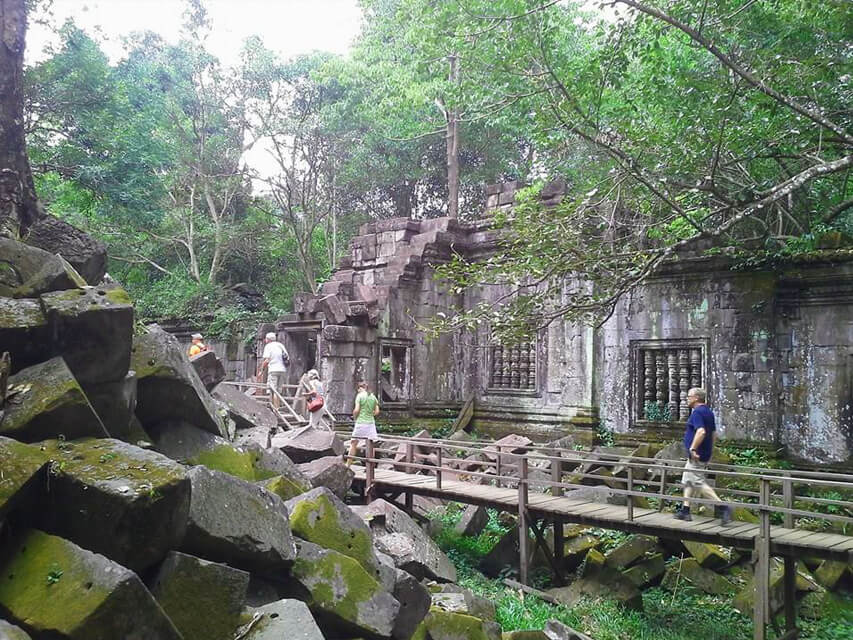
Beng Mealea is an ancient temple located in the dense forests of Cambodia, approximately 40 kilometers east of the Angkor Archaeological Park. The temple is believed to have been built in the early 12th century during the reign of King Suryavarman II, the same king who commissioned the construction of the famous Angkor Wat temple. Beng Mealea, which means “Lotus Pond” in Khmer, was constructed as a Hindu temple dedicated to the god Vishnu. The temple’s layout and architectural style closely resemble that of Angkor Wat, leading scholars to believe that it served as a prototype for the larger and more famous temple complex. The temple remained largely hidden and untouched until the late 19th century when French explorers rediscovered it during their expeditions through Cambodia. In recent years, Beng Mealea has become a popular destination for tourists seeking to experience the mysterious atmosphere of an ancient temple engulfed by nature. In 1992, Beng Mealea was included in the UNESCO World Heritage Tentative List as part of the Angkor Archaeological Park, recognizing its historical significance and architectural beauty. Efforts to preserve and restore the temple have been ongoing, allowing visitors to witness the grandeur of this hidden gem of Khmer architecture.
Not allowed
Know before you go
Feel free to adjust any details or add specific information relevant to your destination or travel agency. Let me know if you need further customization!
Copyright © 2024 Angkor Pioneer Tour.
Our team of passionate guides are here would love to hear from you.
